Measurement of plastic-derived chemicals in 296 types of food reveals that takeaway food contains more chemicals than eat-in food

There are concerns about the health effects of microplastics and chemicals contained in food, but little is known about which foods actually contain what amounts of these substances.
Report — PlasticList
https://www.plasticlist.org/report
The team collected 312 food items, created 775 samples, and sent them to an ISO/IEC 17025 -accredited laboratory. The lab tested 705 samples from 296 food items that were delivered intact for endocrine-disrupting chemicals (EDCs) associated with the plastics industry, such as phthalates and bisphenols .
The highest concentration of bisphenol A was found in a bubble tea from a beverage shop called Boba Guys , where the amount was 325 times the European Food Safety Authority's daily intake limit.

Below is a table arranging the foods tested in order of their bisphenol A content. It seems that Itoen's 'Oi Ocha' also contained bisphenol A at 31 times the standard value.

By the way, the 'Oi Ocha' used as a sample is the type sold overseas.
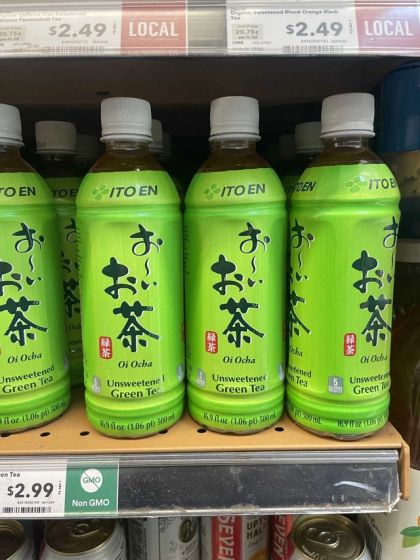
Below is a graph comparing the chemical content of 'commercially available milk (gray)' and 'milk sampled at a farm (black)'. From left to right, the amounts of 'Total', 'Phthalates', 'Bisphenols', and 'Phthalate Substitutes' are shown. It has been pointed out that the milk collected at the farm has a lower amount of chemicals, and that something may be happening at the stage of changing the form to commercial use.

Here's a comparison of 'commercially available beef (gray)' and 'butcher's beef (black) delivered directly from a meat processing facility.' There is a big difference in the amount of phthalate substitutes. The butcher's beef was provided to the research team wrapped in 'brown paper,' and it's possible that this paper may be the cause.
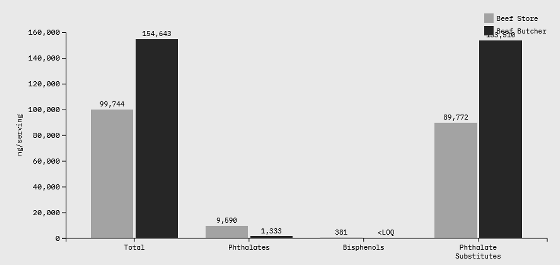
In addition, the research team also compared Ghirardelli cocoa powder from 1940 and 2024.
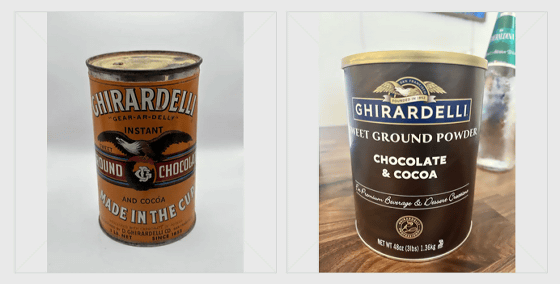
The results are as follows: Depending on the type of chemical, some older cocoas have more, while others have more in recent cocoas.
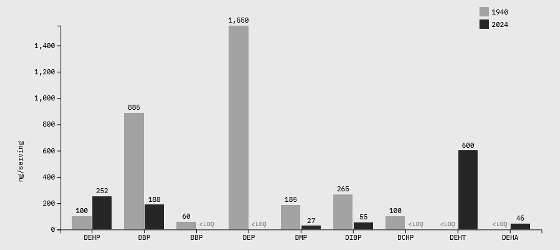
To test the effect of delivery containers, we also conducted an experiment in which two identical servings of food were ordered, one of which was sampled as is and the other was placed in a takeaway container for 45 minutes before being sampled.
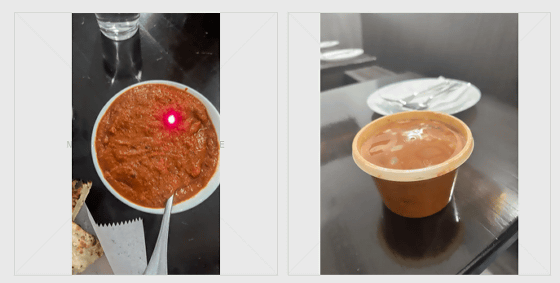
Below are the results of comparing the chemical content of 'sampled immediately after serving (gray)' and 'sampled after placing in a takeout container for 45 minutes (black)'. The increase rate of phthalates was 15%, while the phthalate substitute recorded a higher increase rate of 40%.
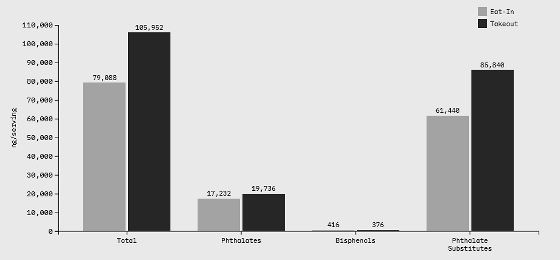
The measurement results for all samples can be viewed at the following link. Click on the sample name to see what the sample looks like.
PlasticList
https://www.plasticlist.org/

Related Posts:







